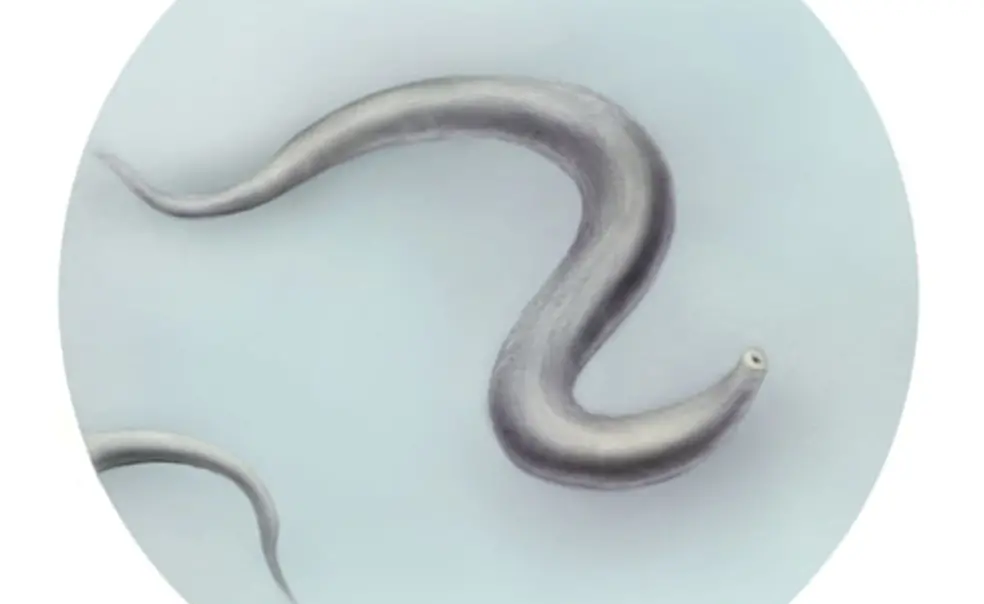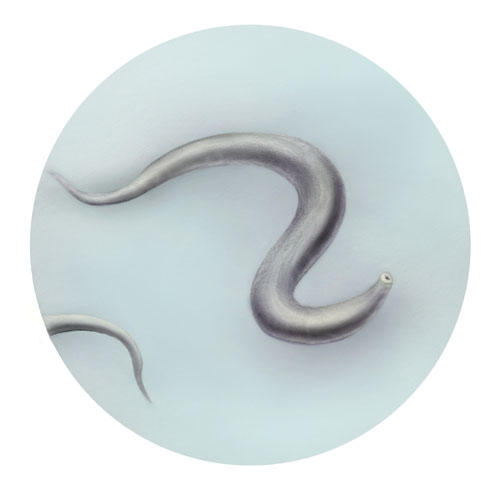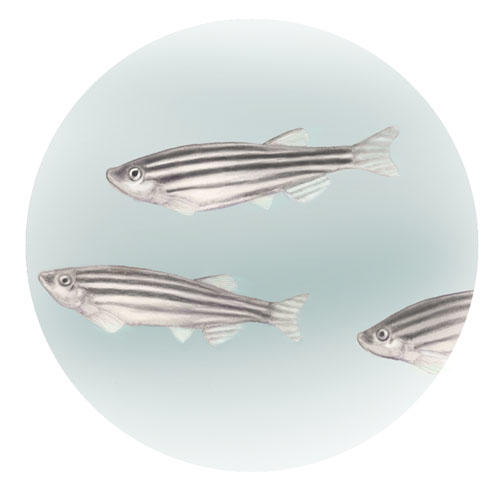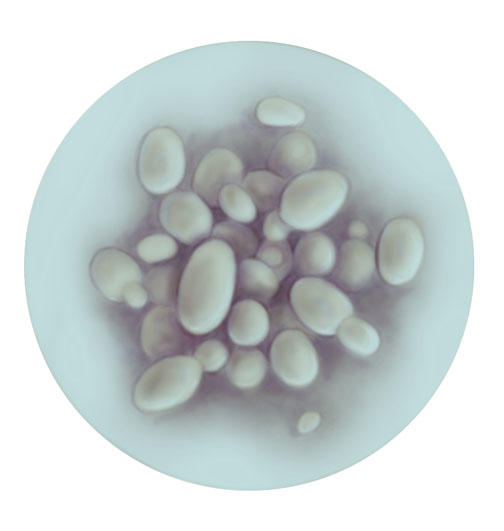Loved in the Lab
The fruit fly has competition when it comes to popularity. Here are three others on researchers’ hot lists:
The roundworm (Caenorhabditis elegans) A single fertilized egg develops into a transparent 959-celled, 1-mm-long nematode in just three days, making it easy to observe its development under the microscope. The worms are inexpensive to grow and require only bacteria as a source of food. Behavioral changes during the worm’s lifespan of two to three weeks allow researchers to tell a young worm from an old one, making C. elegans a great tool to study aging, as does Professor Coleen Murphy.
The zebrafish (Danio rerio) Like humans, these tropical freshwater fish are vertebrates with a spinal cord, brain, and major organs. Unlike humans, one zebrafish pair produces as many as 300 embryos per day, making genetic studies fast and relatively easy. The embryos are large, grow outside of the mother, and are transparent, so development can be observed directly. Scientists are using the fish to study processes and diseases such as muscular dystrophy; Professor Rebecca Burdine uses them in research related to congenital heart defects.
Baker’s yeast (Saccharomyces cerevisiae) Though it has only one cell, it still is aeukaryote, an organism whose genetic material is encased in a nucleus. Scientists’ understanding of how cancer cells deviate from normal cells came from first studying these processes in yeast. “In one day, we can grow a flask of yeast cells that contains many more individual organisms than the number of human beings that have ever been on Earth,” says Professor Mark Rose, who uses yeast to better understand fertilization.














No responses yet